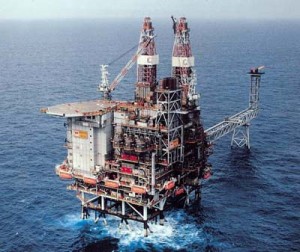 Both West Texas Intermediate and Brent benchmarks eased from a one-week high on expectations the American Petroleum Institute and the Energy Information Administration will report U.S. crude stocks rose for an eight consecutive week last week to the highest since June. The market was further pressured as U.S. Secretary of State John Kerry said he hoped for an agreement over Irans nuclear program within months and after the International Atomic Energy Agency was permitted access to inspect Irans largest uranium mine and a heavy-water plant. A stronger dollar also weighed. Market players eyed the conclusion of a four-day meeting where Chinas Communist Party is set to announce a reform agenda for the next decade.
Both West Texas Intermediate and Brent benchmarks eased from a one-week high on expectations the American Petroleum Institute and the Energy Information Administration will report U.S. crude stocks rose for an eight consecutive week last week to the highest since June. The market was further pressured as U.S. Secretary of State John Kerry said he hoped for an agreement over Irans nuclear program within months and after the International Atomic Energy Agency was permitted access to inspect Irans largest uranium mine and a heavy-water plant. A stronger dollar also weighed. Market players eyed the conclusion of a four-day meeting where Chinas Communist Party is set to announce a reform agenda for the next decade.
On the New York Mercantile Exchange, WTI crude for delivery in December traded at $94.84 per barrel at 8:12 GMT, down 0.32% on the day. Prices held in a range between days low of $94.80 and high of $95.10. The American benchmark rose on Monday but trimmed its weekly advance to less than 0.6% on Tuesday.
Meanwhile on the ICE, Brent futures for settlement in January fell by 0.23% to $105.94 per barrel by 8:11 GMT. Prices shifted between a one-week high of $106.33 and days low of $105.92 per barrel. The European benchmark rose by 1.2% on Monday but pared its weekly advance to 0.9% following Tuesdays decline.
Market sentiment was dampened as U.S. crude oil stockpiles were seen rising for an eight consecutive week. According to a weekly Bloomberg News survey of analysts, crude supplies may have risen by 500 000 barrels to 385.9 million in the week ended November 8, the highest level since the seven days to June 21. Motor gasoline inventories are projected to have fallen by 500 000 barrels, a fifth consecutive weekly decline, while distillate fuel stockpiles probably dropped by 900 000 barrels, the poll showed.
U.S. crude inventories have soared recently as refineries were idled for maintenance works prior to the winter season. Expectations for a pick up in refinery utilization however limited losses as investors expected supplies to be drained in the upcoming weeks.
Yusuke Seta, commodity sales manager at Newedge in Tokyo, commented for CNBC: “Looking at the economic statistics in the United States, demand should be increasing. We should see a drawdown in stocks in the coming weeks, as refiners increase runs ahead of the peak winter season.”
Iran talks
The oil market and mostly Brent were recently pressured on expectations for a thaw in Iran-U.S. relations, which would ease tough sanctions on the Islamic republics crude exports that battered its economy. Iranian officials pledged to recover the nations output to 2005-levels when it pumped an average of 3.91 million barrels of oil per day. The countrys production stood at 2.6 million bpd last month and ranked sixth among other OPEC members. That was down by 565 000 barrels per day from June 2012, when it was the second biggest producer in the group.
Iranian diplomats and their counterparts from the U.S., U.K., France, Russia, China and Germany however failed to reach an agreement on the nations disputed nuclear program in Geneva, which gave oil prices a boost this week. The support however is expected to be short-lived as negotiations are scheduled to resume on November 20. U.S. Secretary of State John Kerry said he hoped for an agreement over Irans nuclear program within months.
Also fanning negative sentiment, Iran said on Monday it will grant U.N. inspectors “managed access” for inspections on some key points of its nuclear program as a sign it is willing to grant concessions. The International Atomic Energy Agency was permitted access to inspect Irans largest uranium mine and a heavy-water plant.
However, a breakthrough is not seen as imminent or sure in any way and market analysts dont see increased Iranian oil supply in the near future.
Chee Tat Tan, investment analyst at Phillip Futures in Singapore, said for CNBC: “At least for now, the idea that Iranian oil will return to global market is off the table. We still see big challenges in reaching a deal. The United States is under political pressure, and Iran doesnt seem to be giving too much.”
China reforms
Market players also looked ahead at the conclusion of a four-day meeting of Chinas Communist Party. Chinese leaders, including President Xi Jinping and Premier Li Keqiang, sat down on Saturday to set a reform agenda for the next decade. China’s government pledged to run tough economic reforms in order to make economic growth less dependable on foreign investment and shift it to domestic consumption-based.
Investors expect the announcement of economic reforms, which will preserve stability and reinforce the Communist Partys power. Though not directly linked to oil pricing, such reforms will show how committed Chinas government is to reform the worlds second biggest economy, which is expected to overtake the U.S. as top oil consumer by the end of the decade.
Oil prices also drew some support as Kazakhstans Kashagan oilfield remained offline and will likely not be operational until spring due to equipment challenges. Also lifting prices, production from Venezuelas Paraguana Refining Center fell to 64% of its 955 000 bpd operable capacity in November, down from 74% in June, due to lack of replacement parts.





